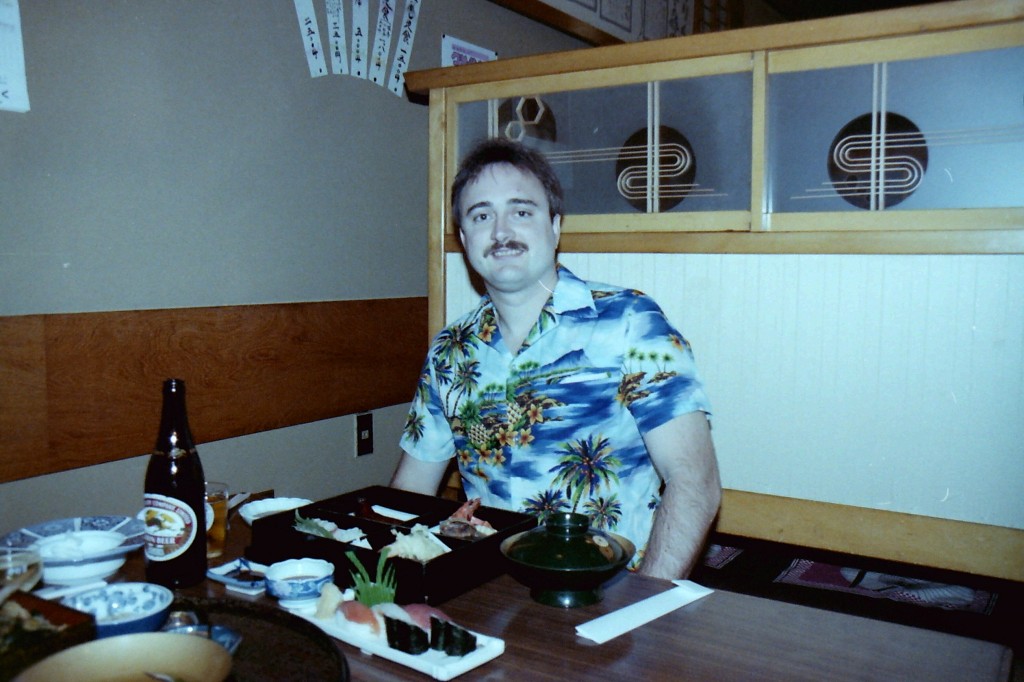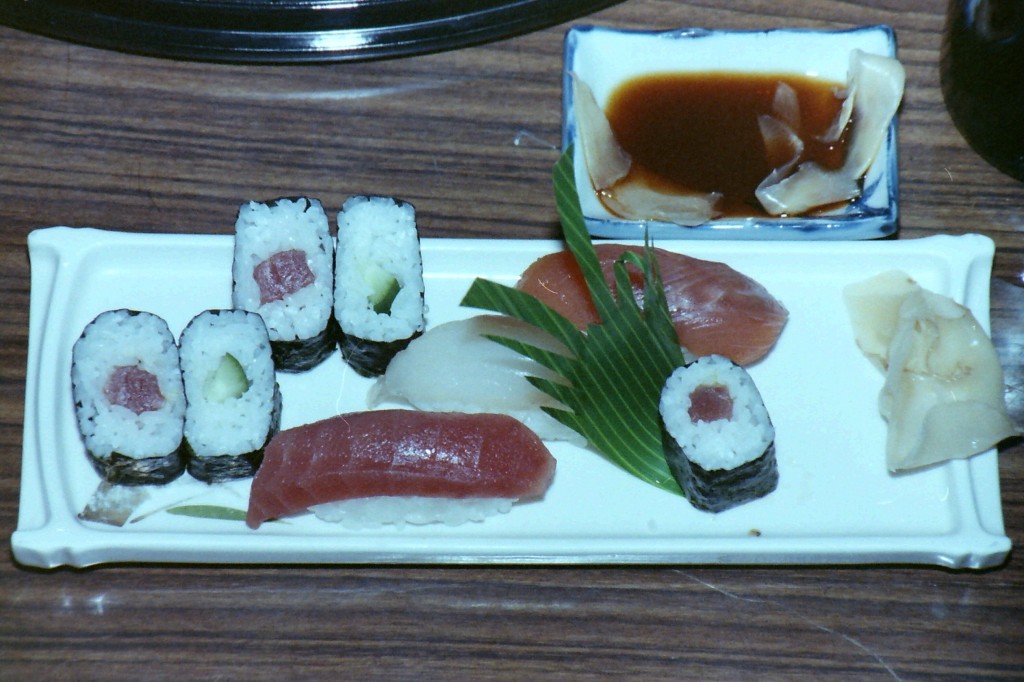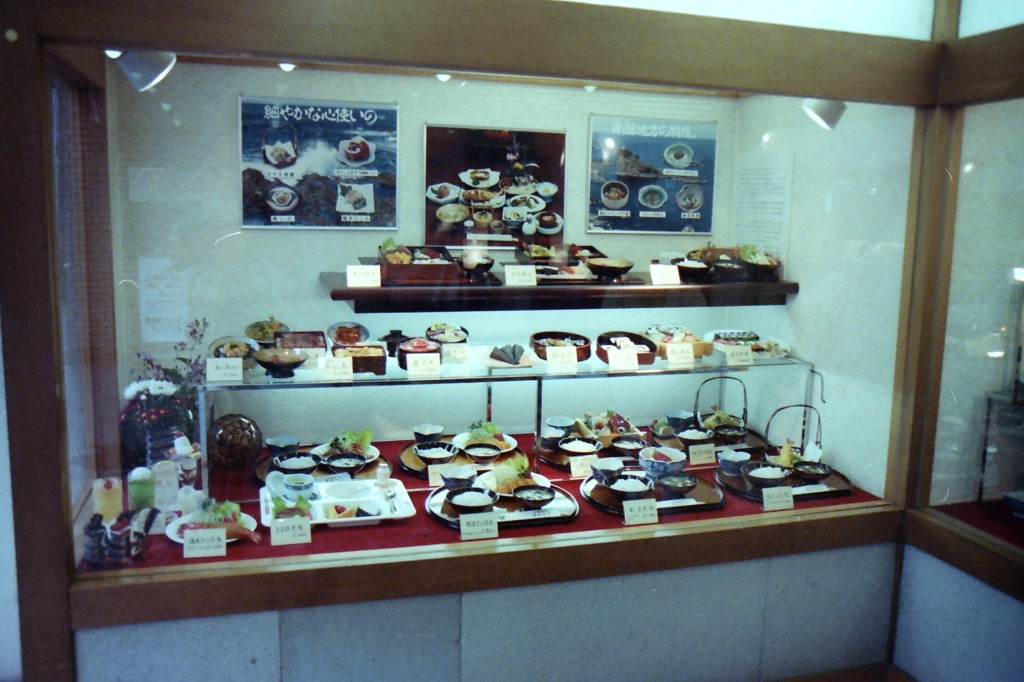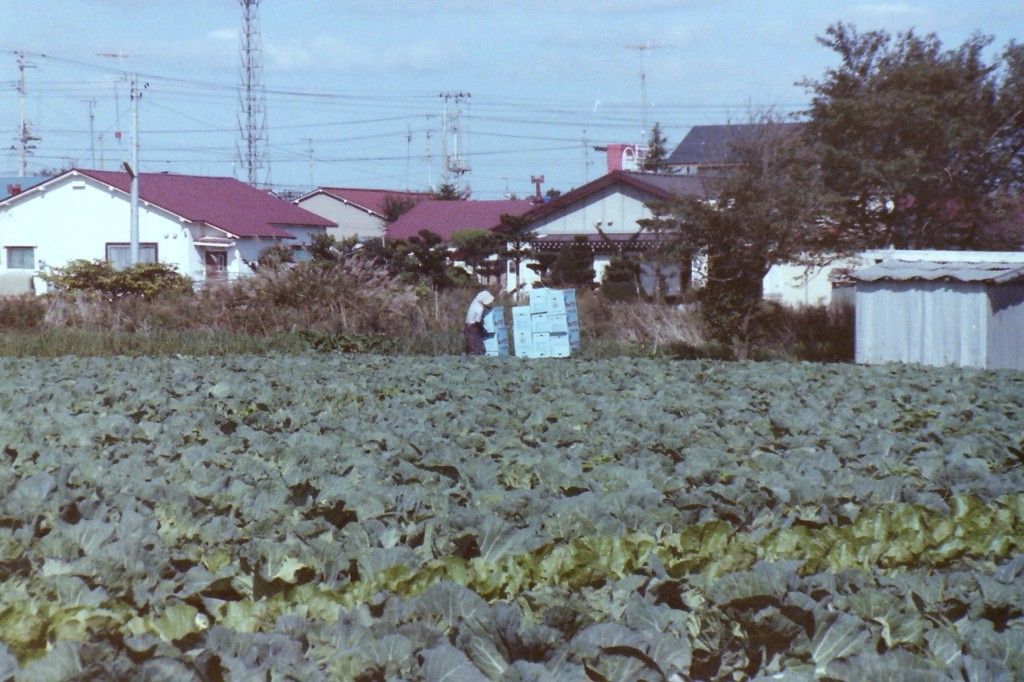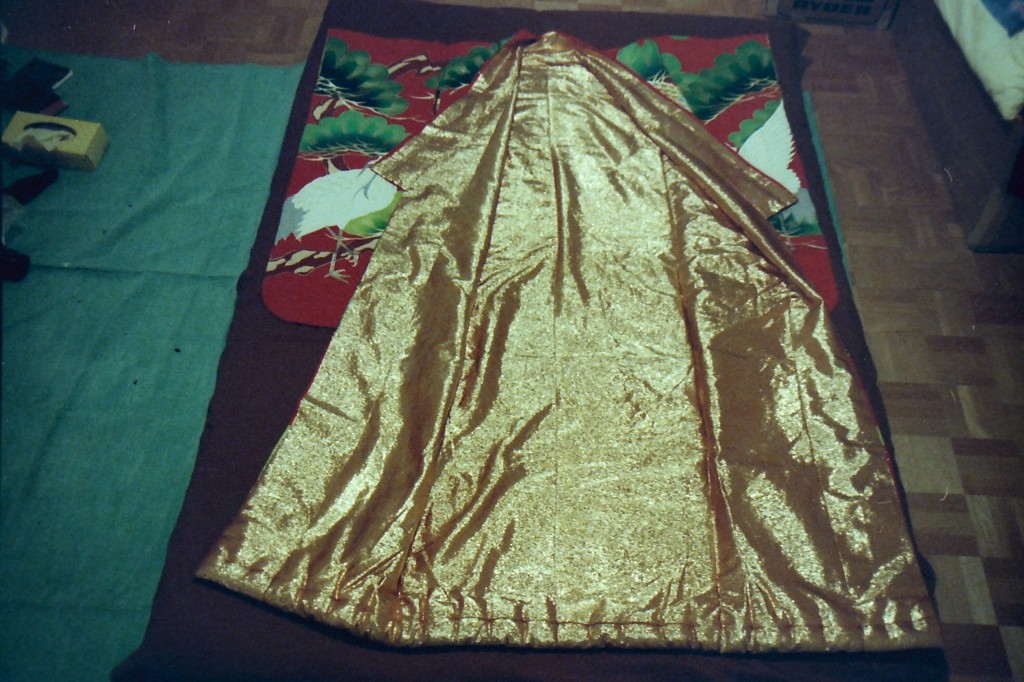Well, not everything is about food, but I wanted to share some more of my Japan photos, and today they start with food. I’m about 34 years old in this photo, and it was so long ago that, if I didn’t know it was me, I wouldn’t recognize myself. The restaurant was located in the city of Hachinohe, Japan (pronounced hah-chee-noh-hay), which means it was the eighth of the “gate” cities in the north of Japan. The table was one of those short ones where you sit on a cushion on the floor.
Here’s a better look at the sushi I was about to eat. Looks pretty much what you can find in America today, doesn’t it? Plastic, fake greens and everything. One thing I’ll say, though–they typically don’t give you fake wasabi in Japan. Here, the wasabi is mostly powdered horseradish colored green and rehydrated for serving.
Every good restaurant in Japan has to have depictions of their dishes in a display window visible from the outside. It all looks very real, very appetizing, but it’s all plastic, just like the green stuff on the sushi plate, but much more carefully crafted.
This field of cabbage is both green and real. It wasn’t a whole lot bigger than what you can see here, but it was still a commercial operation. You can see one of the workers in the back stacking up the produce boxes. This little field was nested into the city of Misawa, where I lived.
See, not everything is about food. Check out this Japanese wedding kimono, or uchikake. I picked it up for a song (and about $120 American) at a used kimono sale. The Japanese usually don’t care much for used stuff, but since these things (at the time) could go for thousands of dollars, a rental market existed for those who couldn’t afford to buy them. After several weddings, they cycled the gowns out to resellers who primarily targeted Americans. These things sported lots of hand-done embroidery.
I have no clue of what the inside material was made, but it looks rich. It would be interesting to find out what the original price was for this kimono. For now, it sits folded in a drawer, seldom seeing daylight over the past twenty-two years.

